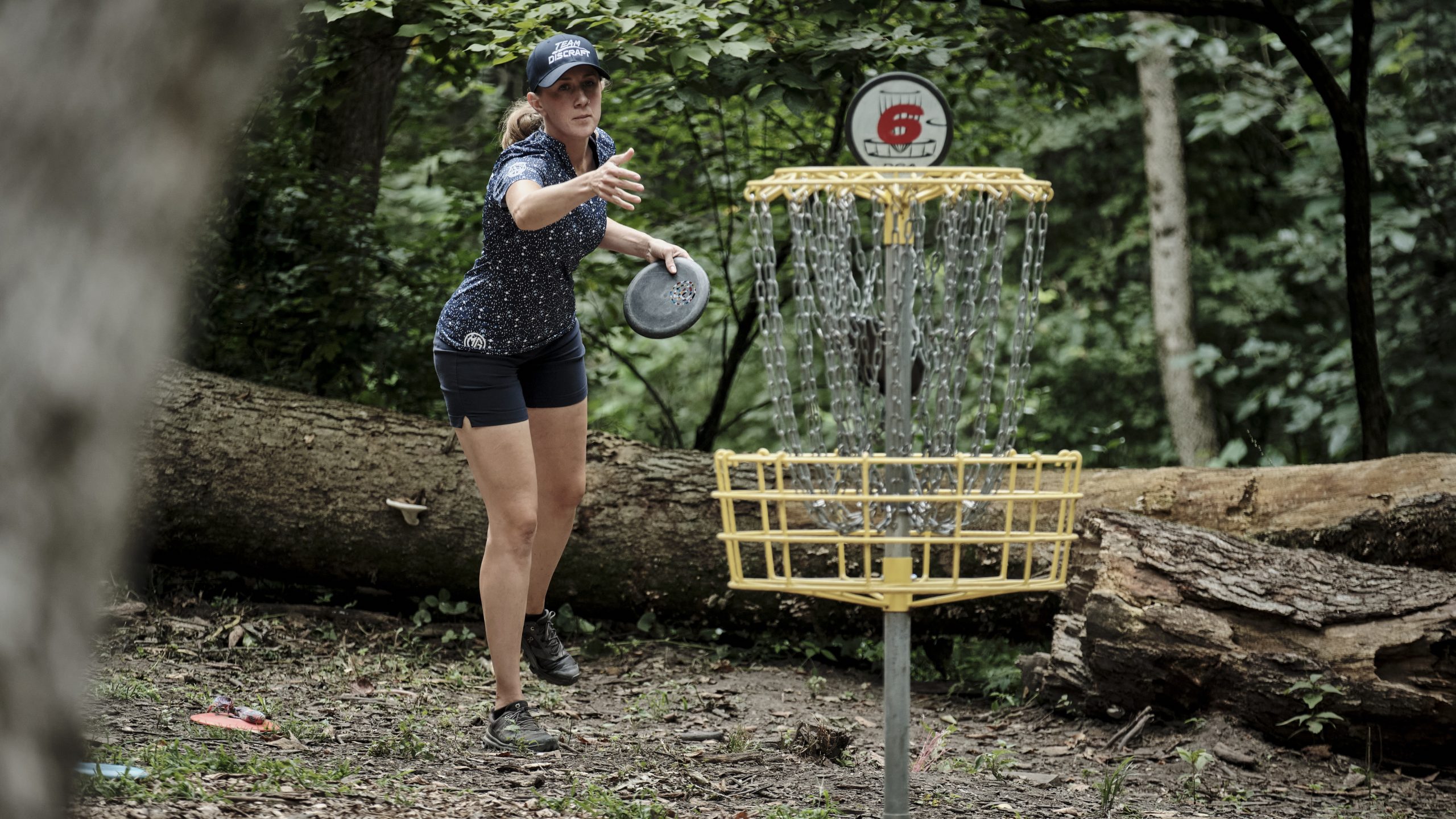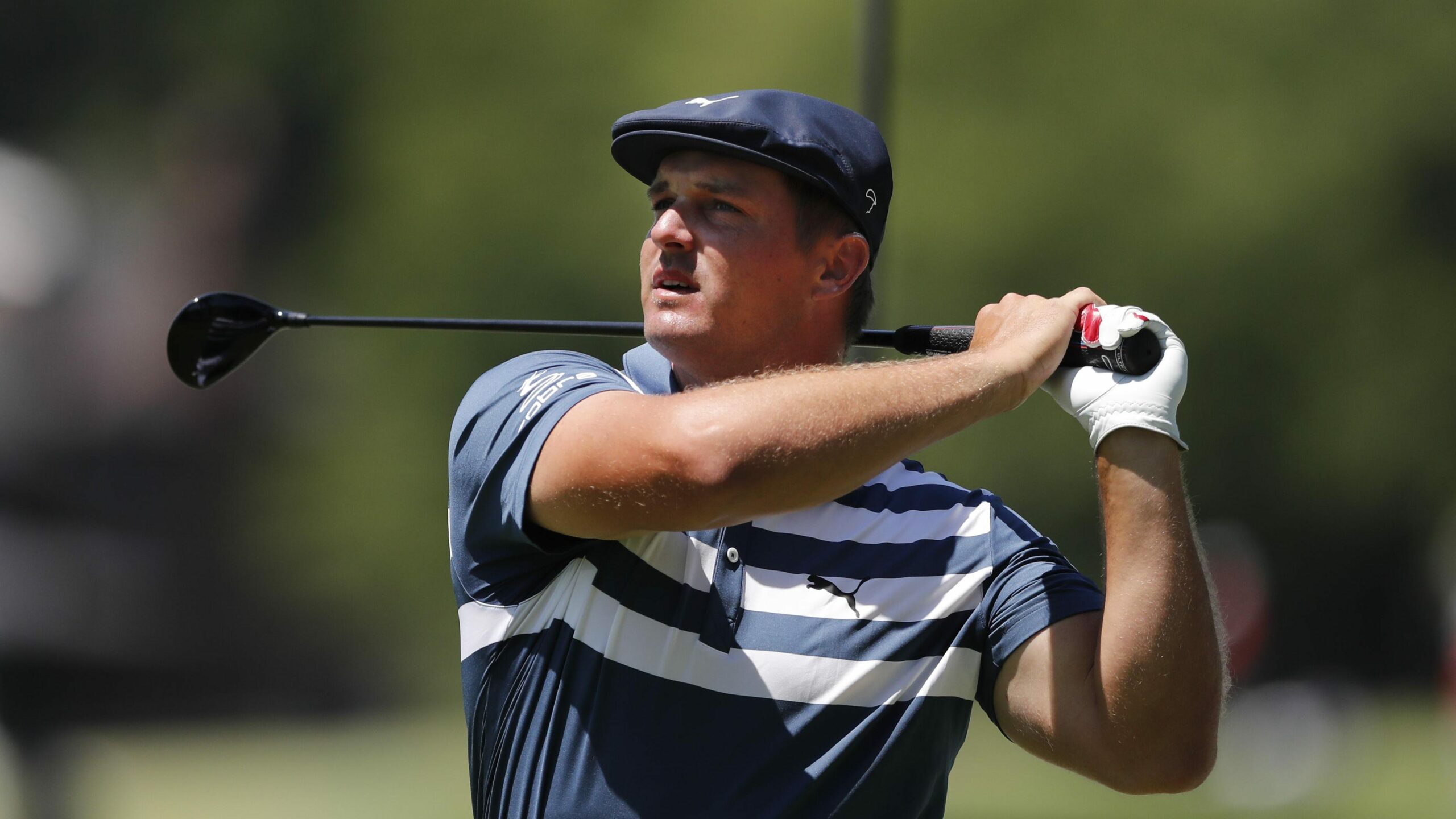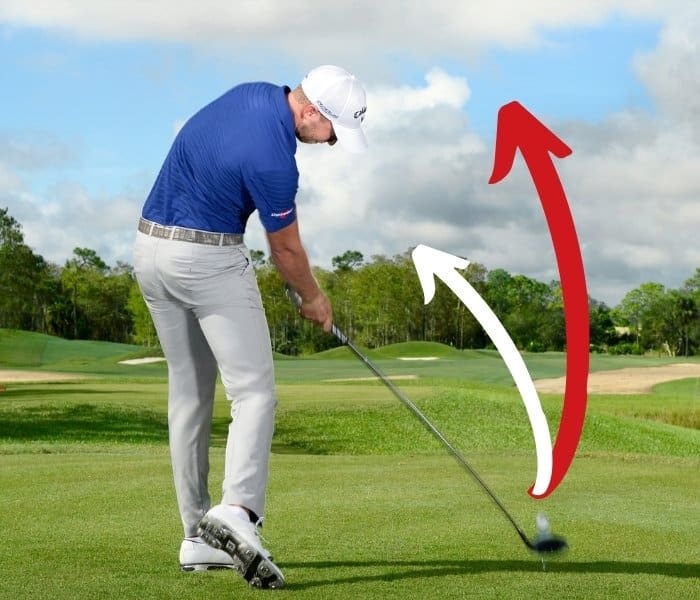How to Master Backspin: Secrets to Pinpoint Precision in Golf
To put a backspin on a golf ball, hit it with a descending blow and with an open clubface. Backspin is important for better control of the ball’s flight and distance.
In addition, it helps the ball stop quickly when it hits the green. To add backspin to your shots, you must have good ball-striking ability and appropriate technique. Players should focus on hitting the ball with a downward clubhead motion and an open clubface.
It is essential to understand the role of various clubs such as wedges and the type of ball used. Practicing and experimenting with these techniques on the course or at the driving range can lead to improved backspin. In this article, we will cover the various ways to achieve backspin, golf ball selection, and much more to help you improve your game.

Credit: www.amazon.com
Understanding The Importance Of Backspin For Pinpoint Accuracy
Golf is a sport that requires precision and accuracy, and one of the key factors that make that possible is backspin. Backspin is the backward rotation of the golf ball that is produced when the clubface comes in contact with the ball.
This rotation causes the ball to lift up, spin backward, and eventually land softly on the ground. In this section, we’ll explore the science behind backspin, its importance in golf, and the common challenges faced by golfers in creating backspin.
Explaining The Science Behind Backspin For Golf Shots
Backspin is created when the clubface comes in contact with the ball and imparts spin on it. The grooves on the clubface, combined with the speed and angle of the clubhead, create friction between the clubface and the ball. This friction causes the ball to spin backward while in the air, enhancing the lift force acting on the ball.
The lift and backward spin caused by backspin keep the ball in the air for longer reduces the effect of wind resistance, and results in a longer carry distance and softer landing on the ground.
Why Is Backspin Crucial For Precision Shots In Golf?
Backspin is crucial for precision shots in golf because it determines how high and far the ball will travel and how it will stop on the green. Without a backspin, the ball would travel through the air at a flatter trajectory, making it harder to stop on the green.
Backspin also helps to prevent the ball from rolling too far when it hits the green, ensuring that it stays close to the hole. By adding backspin to their shots, golfers can take advantage of the ball’s lift and spin to achieve pinpoint accuracy and control on the green.
Common Challenges Faced By Golfers In Creating Backspin
Creating backspin can be challenging for many golfers, especially beginners. Some of the common challenges faced by golfers in creating backspin are:
- Inconsistent contact with the ball: Inconsistent contact with the ball can make it difficult to create backspin consistently. Golfers need to ensure that they hit the ball in the sweet spot of the clubface to maximize the spin and lift on the ball.
- Poor clubhead speed and angle: The speed and angle of the clubhead play a critical role in generating backspin. Golfers need to ensure they have a consistent and effective swing to generate the speed and angle needed to create backspin.
- Incorrect ball position: Placing the ball too far back or forward in the stance can affect the angle of attack and the loft of the club, which can impact the amount of backspin generated. Golfers need to experiment with different ball positions to find the optimal position for creating a backspin.
By understanding the science behind backspin, its importance, and the common challenges faced by golfers in creating it, you can take your golf game to the next level. With practice and patience, you can master the art of creating backspin and achieve pinpoint accuracy and control on the green.
Perfecting Your Backspin Technique
Are you eager to up your golf game and add some style to your shots? Then it’s time to master the art of backspin! There’s nothing quite like watching your ball soar through the air with the perfect amount of spin, only to land and abruptly stop.
With a bit of practice and the right techniques, anyone can learn how to put a backspin on a golf ball. Here are some tips and tricks to help you perfect your backspin technique.
How To Achieve The Ideal Ball Contact For Backspin
Achieving the perfect ball contact is essential to creating backspin. Here’s what you need to keep in mind:
- Use a wedge club with a higher loft angle (around 52-60 degrees) for optimal backspin.
- Aim to make contact with the ball in the lower half of the clubface.
- Strike the ball cleanly, using the club’s grooves to create the necessary friction.
- To generate more backspin, increase your clubhead speed and swing with a descending blow.
Key Factors Impacting The Height, Distance, And Spin Rate Of Your Golf Shots
Numerous factors come into play when it comes to hitting the perfect backspin shot. Here’s what you need to keep in mind:
- The type of golf ball you use can impact your backspin rate. Golf balls with a soft cover and a low compression rating (around 70-80) are ideal for creating a backspin.
- Wind speed and direction can impact your backspin shot. Aim to shoot against the wind for added backspin.
- The angle of your clubface at impact can impact the height, distance, and spin rate of your shot.
- The quality of your swing and clubhead speed can all impact your backspin technique.
Best Clubs And Balls For Creating Backspin
Choosing the right clubs and balls can make all the difference when it comes to nailing your backspin technique. Here’s what you need to keep in mind:
- Wedge clubs, like the pitching wedge and sand wedge, are ideal for creating backspin.
- Choose golf balls with a urethane cover and a low compression rating.
- Don’t neglect the importance of a good quality golf grip.
Tips And Tricks To Improve Your Backspin Technique
Ready to take your backspin game to the next level? Here are some tips to help you improve your technique:
- Practice your swing and timing to get the perfect ball contact.
- Experiment with different clubface angles to see what works best for you.
- Try using backspin in different situations, such as when hitting out of a sand trap.
- Spend time perfecting your chipping and pitching technique to develop your backspin.
By following these tips and tricks, you’ll be able to master the art of backspin in no time. Remember to take your time, practice regularly, and most importantly, have fun on the course!
Practicing Backspin Shots On The Course
Are you looking to add some backspin to your golf shots? If so, practicing your backspin shots is essential. Here are some ideal course conditions and real-life scenarios for testing your backspin skills, as well as some tips on how to incorporate backspin into your game strategy.
Ideal Course Conditions For Practicing Backspin
To practice your backspin shots, you need the right conditions on the golf course. Here are some ideal course conditions for practicing backspin:
- A golf course with firm and fast greens – these conditions make it easier to generate backspin on your shots.
- A course with a practice area that includes a chipping green and a bunker – allows you to practice different types of shots and get a better feel for the amount of backspin you can generate.
- A course with a driving range that has high-quality practice balls – this allows you to practice your backspin shots with consistent equipment.
Real-Life Scenarios For Testing Your Backspin Skills
Once you have found the ideal course conditions, it’s time to test your backspin skills with real-life scenarios. Here are some scenarios to try out:
- Uphill lies – practicing backspin shots on uphill lies can prove to be particularly challenging but also incredibly rewarding when you get them right.
- Divots and tight lies – hitting backspin shots from divots or tight lies can be a real test of your skills, but it’s essential to master these types of shots to improve your overall game.
- Longer shots – once you have mastered backspin shots on short shots, try to apply the same techniques to longer shots.
How To Incorporate Backspin Into Your Game Strategy
Now that you’ve practiced your backspin shots and tested your skills on the course, it’s time to incorporate backspin into your game strategy. Here are some tips to help you do just that:
- Assess the course conditions – before taking your shot, assess the course conditions to determine if there is an opportunity for backspin.
- Focus on ball position – the position of the ball in your stance can have a significant impact on the amount of backspin you can generate.
- Practice, practice, practice – the more you practice your backspin shots, the more confident you will become in using them during a round.
By following these tips, you can add some style and finesse to your golf game with impressive backspin shots. Remember that mastering backspin shots takes practice, so keep at it and enjoy the journey to becoming a better golfer.
Common Mistakes To Avoid When Creating Backspin
Understanding The Most Common Backspin Mistakes Made By Golfers
Backspin is an essential skill in golf. When done right, it not only looks impressive but can also make a significant difference to your game. However, creating backspin is easier said than done. Here are some common mistakes that golfers make when trying to put backspin on a golf ball:
- Incorrect club selection: Choosing the wrong club can lead to poor backspin. For example, if you use a driver instead of a wedge, there will be minimal backspin, if any.
- Poor swing technique: The way you swing your club can significantly affect the backspin on the ball. If you hit the ball too hard, it will go too far, and if you hit it weakly, you’ll get little to no backspin.
- Hitting only the top half of the ball: This mistake is quite common, and it causes the ball to be hit with little to no spin. You need to make sure that you hit the ball’s lower half to get the desired backspin.
- Distance from the ball: If you stand too close or far from the ball, you’ll end up with inconsistent spin. The ideal distance between you and the ball is when your arms are hanging freely from your shoulders.
How To Correct Inconsistent, Weak, Or Overspinning Shots
Now that you know the common backspin mistakes made by golfers let’s see how you can correct them:
- Choosing the right club: To achieve backspin, you need to pick a club with the right amount of loft, such as a wedge. For example, a sand wedge has a loft angle of about 56 degrees, making it ideal for creating backspin.
- Swing correctly: You need to swing your club with the proper technique, using a downward stroke that contacts the ball first before the turf. Ensure your clubhead speed is relatively slow, and follow through after the impact.
- Strike the ball correctly: Hitting the ball’s lower half is essential to achieve that perfect backspin. You should aim to hit the ball slightly under its center to generate the most optimal spin.
- Find the right distance: Remember that your distance from the ball should be ideal. You’ll need to stand in a comfortable posture with your hands hanging down naturally to establish a consistent distance from the ball.
Common Misconceptions About Creating Backspin
There are several misconceptions that people have about creating backspin, here are a few that you may have heard:
- Ball compression: Some golfers think that by compressing the ball, they’ll be able to achieve more backspin. However, this isn’t necessarily true. Compression varies depending on the ball’s composition and quality, so it’s not something you should worry too much about.
- Backspin with every shot: Don’t expect to create backspin on every single shot. You’ll need the right conditions, such as a soft green, to generate backspin.
- Use more power: Trying to generate more power in your swing will not necessarily create more backspin. Instead, it can cause the ball to fly further than intended or even miss the target altogether.
Remember that creating backspin takes practice and patience, so don’t get too disappointed if you don’t get it right at first. Keep practicing and remember the tips above, and you’ll soon be able to get that impressive backspin on every shot.
Frequently Asked Questions Of How To Put Backspin On A Golf Ball
How Do You Create Backspin On A Golf Ball?
To create backspin on a golf ball, hit down on the ball with a clean, square clubface and a steep angle of attack.
What Is The Effect Of Backspin On A Golf Ball?
Backspin causes the ball to climb higher and stay in the air longer, resulting in a shorter overall shot distance but increased accuracy and control.
What Clubs Are Best For Producing Backspin On A Golf Ball?
Wedges are the most common clubs used for producing backspin on a golf ball, specifically those with a higher loft angle, such as a sand wedge or lob wedge.
Conclusion
Putting a backspin on a golf ball is both a skill and an art. It requires careful attention to technique, a keen eye, and a lot of patience. However, with the right approach, you can perfect your skills and become a master at putting a backspin on your golf ball.
Remember, practice makes perfect and mastering this technique will take time. Start by focusing on your grip, stance, and swing. Experiment with different clubs and angles until you find the perfect combination to produce the desired backspin. Don’t forget to keep your focus on the ball until the very end.
By following the steps outlined in this post, you will be well on your way to putting a backspin on your golf ball. With dedication and practice, you can make this challenging technique a part of your golfing repertoire. So go out there, hit the greens, and put your new skills to the test.
Good luck!



